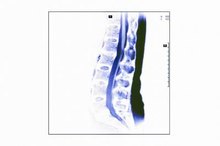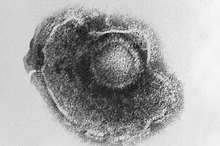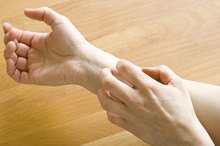What does fact checked mean?
At Healthfully, we strive to deliver objective content that is accurate and up-to-date. Our team periodically reviews articles in order to ensure content quality. The sources cited below consist of evidence from peer-reviewed journals, prominent medical organizations, academic associations, and government data.
The information contained on this site is for informational purposes only, and should not be used as a substitute for the advice of a professional health care provider. Please check with the appropriate physician regarding health questions and concerns. Although we strive to deliver accurate and up-to-date information, no guarantee to that effect is made.
Joint Pain from Herpes
There are eight types of herpes simplex, and each can cause joint pain. These include HSV-1 (cold sores) and HSV-2 (genital), chicken pox and shingles, Epstein-Barr virus, cytomegalovirus, roseola (a type of measles), and HSV-8 (which causes skin cancer).
If you are experiencing serious medical symptoms, seek emergency treatment immediately.
Early Stages
When a person is first infected with herpes, the virus travels to nerves located in the base of the spine. There are no symptoms such as joint pain during the initial latent stage.
Symptoms
Can Shingles Affect Your Joints?
Learn More
The first outbreak of herpes is usually the most severe. For some people, this can include joint pain, blisters and flu-like symptoms such as swollen and tender lymph nodes, fever and headache.
Recurrent Outbreaks
Some types of herpes involve recurrences. These episodes are typically less severe than the initial one and it is less common for joint pain to be involved.
Shingles
Symptoms of Herpes of the Spine
Learn More
Shingles is a particularly painful form of herpes and is related to chicken pox, according to the National Institutes of Health 1. Symptoms usually involve the outbreak being localized to one side of the body as well as joint pain, abdominal pain, fever and chills, vision difficulties, and muscular difficulties.
Duration/Relief
Joint pain from herpes usually lasts about 10 days to three weeks. Because herpes is a virus, symptomatic pain relief is recommended until the virus clears on its own. Antivirals, antihistamines, pain medications and capsaicin cream have been found to be helpful.
Related Articles
References
- National Institutes of Health: Shingles
- McQuillan G, Kruszon-Moran D, Flagg EW, Paulose-Ram R. Prevalence of herpes simplex virus type 1 and type 2 in persons aged 14–49: United States, 2015–2016. NCHS Data Brief. 2018;304.
- Tronstein E. Genital Shedding of Herpes Simplex Virus Among Symptomatic and Asymptomatic Persons With HSV-2 Infection. JAMA. 2011;305(14):1441. doi:10.1001/jama.2011.420
- World Health Organization (WHO). Herpes simplex virus. Updated January 31, 2017.
- Centers for Disease Control and Prevention. Genital Herpes - CDC Fact Sheet (Detailed). Updated January 31, 2017
- Centers for Disease Control and Prevention. Genital Herpes - CDC Fact Sheet. Updated August 28, 2017.
- Chun H, Carpenter R, Macalino G, Crum-Cianflone NF. The role of sexually transmitted infections in HIV-1 progression: A comprehensive review of the literature. Journal of Sexually Transmitted Diseases. 2012;2013(176459):1-15. doi:10.1155/2013/176459
- Heslop R, Roberts H, Flower D, Jordan V. Interventions for men and women with their first episode of genital herpes. Cochrane Database Syst Rev. 2016 Aug 30;(8):CD010684. doi:10.1002/14651858.CD010684.pub2
- Jin F, Prestage GP, Mao L, Kippax SC, Pell CM, et al. Transmission of herpes simplex virus types 1 and 2 in a prospective cohort of HIV-negative gay men: the health in men study. J Infect Dis. 2006 Sep 1;194(5):561-70.
- Schulte JM, Bellamy AR, Hook EW 3rd, Bernstein DI, Levin MJ, et al. HSV-1 and HSV-2 seroprevalence in the united states among asymptomatic women unaware of any herpes simplex virus infection (Herpevac Trial for Women). South Med J. 2014 Feb;107(2):79-84. doi:10.1097/SMJ.0000000000000062
Writer Bio
Susan Presley has worked in health care journalism since 2007, and has been published in the American Journal of Nursing and other academic periodicals. She received her Bachelor of Arts from Truman State University and a Master of Divinity degree from Louisville Presbyterian Theological Seminary.







